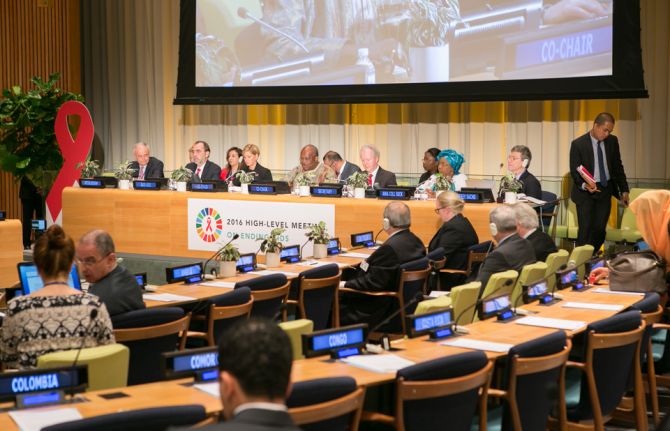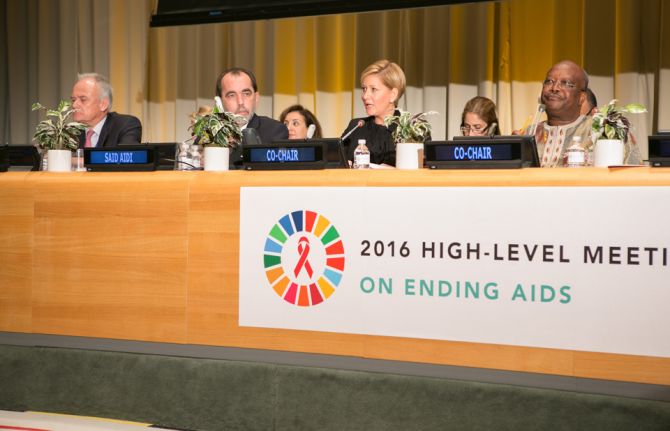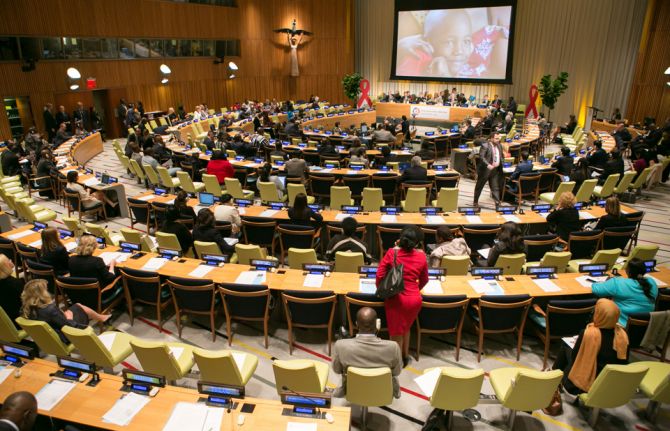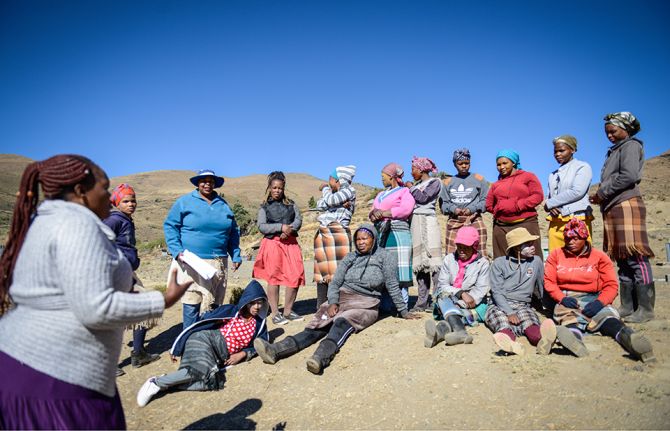



Update
Financing the end of AIDS: the window of opportunity
09 June 2016
09 June 2016 09 June 2016A panel meeting at the United Nations General Assembly High-Level Meeting on Ending AIDS, being held from 8 to 10 June, warned that the global commitment to end AIDS as a public health threat by 2030 cannot be met without increased funding, more efficiency and improved programme effectiveness.
Members of the panel, which met on 8 June and was entitled “Financing the end of AIDS: the window of opportunity,” argued that greater investment in the AIDS response needs to be front-loaded in the next five years and reach the US$ 26.2 billion needed by 2020 in low- and middle-income countries. Governments and development partners must increase their investments to close the nearly US$ 7 billion gap between the resources available for HIV in 2014 and the 2020 peak. This will avoid a looming funding crisis for treatment and prevention.
According to the gathering’s political leaders, experts and representatives of international organizations and civil society, this extra funding will allow the world to meet the 2020 interim targets on the road to ending the epidemic. These targets include the 90–90–90 treatment target of 90% of people living with HIV knowing their status, 90% of people who know their HIV-positive status accessing treatment and 90% of people on treatment having a suppressed viral load, reducing new HIV infections to fewer than 500 000 and elimination of HIV-related discrimination.
It was argued that the AIDS response must spend increased funding wisely by adopting the Fast-Track approach of rapidly scaling up treatment and prevention services with more efficient and effective programmes. The panel also discussed mechanisms to facilitate development partners and low- and middle-income countries front-loading resources to reach the ultimate goal of ending the AIDS epidemic as a public health threat by 2030.
Beyond the call for more funding and better allocation of existing resources, other critical factors for the sustainability of the response were highlighted, including local production of antiretroviral medicines in Africa, improvement in the procurement of commodities through price negotiations and access and affordability of modern pharmaceuticals in all countries.
There was a strong call for the following: facilitating the transition of countries moving into higher-income brackets, including supporting community-based programmes; fully funding the needs of gay men and other men who have sex with men, people who inject drugs, sex workers, transgender people and prisoners, and particularly young people among those populations; investing in communities; and scaling up public–private partnerships.
The panel stressed forcefully that the cost of inaction for individuals, communities, countries and regions was simply too high and that the world could not afford to miss this window of opportunity to make funding sustainable and reinvigorate the HIV response over the next five years.
Quotes
“Countries which can pay should do so in order for the international community to support other countries which have the will but not the financial means.”
“We need to guarantee full funding for prevention, treatment and care for people who inject drugs, gay men and other men who have sex with men, sex workers, transgender people and prisoners.” ,
“If we really want to take up the challenge of ending AIDS by 2030, we need to focus on innovative financing. Innovation financing since 2002 has yielded US$ 8 billion, including airline taxes and coupons for vaccines. It will be even more important now if we are to reach the Sustainable Development Goals.”
“The Global Fund to Fight AIDS, Tuberculosis and Malaria is everyone in this room, government, the private sector, civil society. If we all come together in the partnership that the Global Fund represents, we can absolutely end HIV, tuberculosis and malaria for good.”
“It is not just where the money comes from, it’s where the money is spent. It needs to be spent for people living with HIV, for women and for key populations. It is our lives on the line.”
“People who inject drugs have been left furthest behind in the global response to HIV. We know the HIV epidemic among people who inject drugs is driven by stigma, discrimination and violence. The lack of political willingness for harm reduction can be observed all over the world. We can virtually end AIDS among people who inject drugs by simply redirecting money from the war on drugs to harm reduction.”
“Innovation is something that we put as a top criterion for how we can deliver. We are always looking for new ideas, and I think they can come from our dedicated civil society organizations.”
“We need to see this endeavour as an investment from one generation to another. For the 2030 goals, a multisectoral approach will not allow us to reach only one objective but also to reach others. Today, crises are global and therefore require a global response.”
“For us, strengthening the health system is critical. We have a very ambitious objective to screen and treat, but with weak health systems we will be unable to achieve our goals.”
“We have a tremendously important opportunity with the replenishment of the Global Fund to Fight AIDS, Tuberculosis and Malaria. We need to look at the needs, estimate budgets based on those needs and then mobilize the resources. Everything should be driven by the analytics.”



